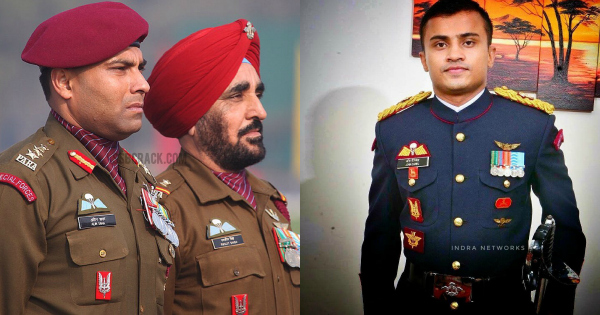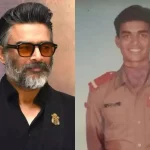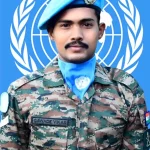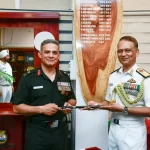When the angels have fallen down…and the devil has had his day…You’ll find the gates of heaven..Guarded by a single MAROON BERET..!!
They revel in their image as the steely, fearless elite of the Indian Special Forces and are regarded as the hard men who eat GLASS!!
Meet the RED DEVILS!
We faced the horrors of Nagrota Attacks and URI Attacks and India responded with successful surgical strikes at Pakistan. There was not even a single scratch to the forces which returned after destroying terror camps in PoK and that gave the Narendra Modi government political relief and a few more inches of chest… You know what is common in all these attacks?
“Para Commandos” — the ‘RED DEVILS‘
They are the Indian special forces and the first one to fire back on the terrorists and mow easy battlegrounds for the frontline forces to come and take over and then vanish silently into the same Dhruv helicopters through which they were dropped down to the conflict zone.
The Paratrooper Special Forces Unit was first used in the World War II. But it was India’s war with Pakistan in 1965 when they were converted into a special unit called the Para Commandos.
The maroon beret in a military configuration has been an international symbol of airborne forces since the Second World War.
The Indian Army’s 50th (Independent) Parachute Brigade, including the minor/support units of the formation, the President’s BodyGuard, a ceremonial guard unit with their operational role as the Pathfinder company of the parachute brigade, and the special forces units wear the maroon beret.
The Indian Air Force’s special operations force, Garud Commando Force, also wears the maroon beret and are parachute trained, with some personnel even free fall qualified.

The Special Frontier Force (Para-Military Forces) of the Home Ministry are parachute trained and wear the maroon beret.
In Death Valley, the beret matters…
In just two years, the use of the army Para SF units has increased so much that the government is planning to increase the number of such battalions.
The army currently has eight Special Forces battalions with about 650 troops each, much smaller than regular infantry battalions (900-1,100 troops each).
This is because the nature of SF operations is vastly different. Unlike regular battalions that operate with sections, platoons and companies of troops, the SF units operate in small squads with five to six men in each.
The fundamental difference between infantry battalions and Para SF battalions is that the Para SFs are not tasked to hold grounds. They are mobile forces that have to strike multiple targets and move on — the “tip of the spear”.
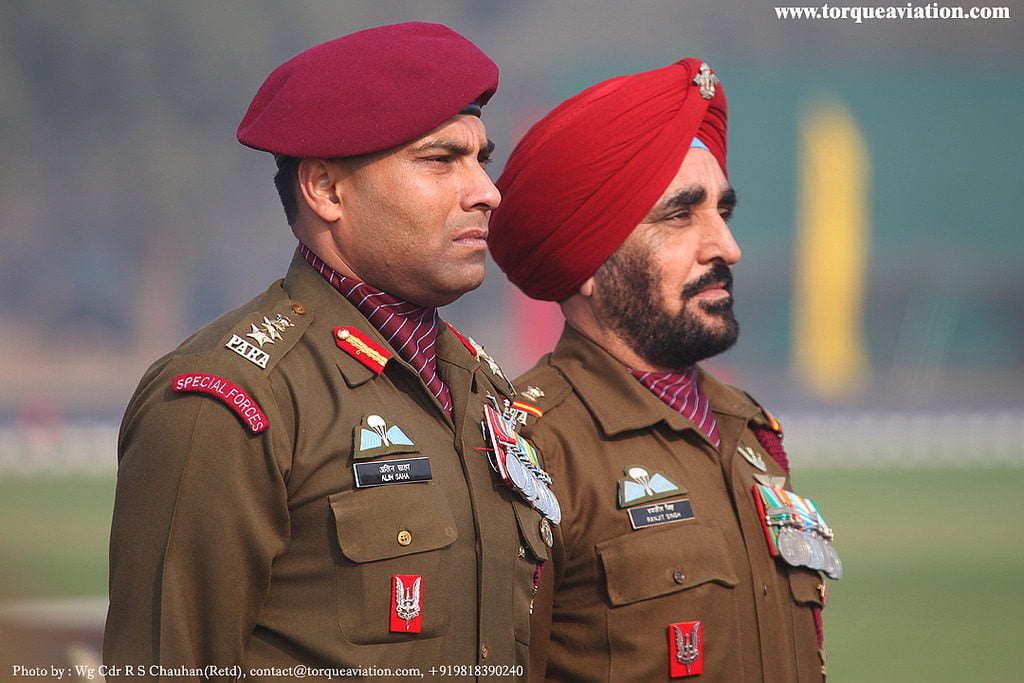
The military establishment now views Special Forces as a necessary component of what it calls “hybrid” warfare. They are allocated to commands – especially the northern and eastern commands, as per the terrain and operational requirements.
Unlike the regular battalions of the army, they are unpublicised till a government chooses to announce a Special Forces operation. The Modi government has done so probably for the first time in a theatre of non-conventional war.
So secretive is the culture of the Special Forces that even episodes from conventional wars fought decades ago are still hushed-up. Little is known beyond key identifier of a Special Forces soldier – the maroon beret – and their naughty ditty: ” Jab bura hai waqt, tab commando hai f****d”.
Special forces are expensive to raise and maintain. The Indian Army does not list the types of equipment that are at the disposal of the Special Forces. But they were the first to be issued the Israeli-origin Tavor guns to ensure that they have multi-incursion capability.
The Para commandos are part of highly trained Parachute Regiment of Indian Army and make the largest special forces. A rough estimation says out of 7500 elite paratroopers only 2500s are Para Commandos. Needless to say, they are highly trained, motivated and super deadly.
Late captain Pawan Kumar, 22, from 10 PARA SF martyred fighting terrorists in Pampore in Kashmir Valley.
THE BERET IS SAID TO BE EARNED WITH BLOOD…
The Para Beret is Maroon in colour as it’s said that the Green Army Beret is turned Red by blood and then it’s earned and so is the story of ‘Balidaan’. It’s the badge of sacrifice meaning whosoever wears it owes his blood to the nation.
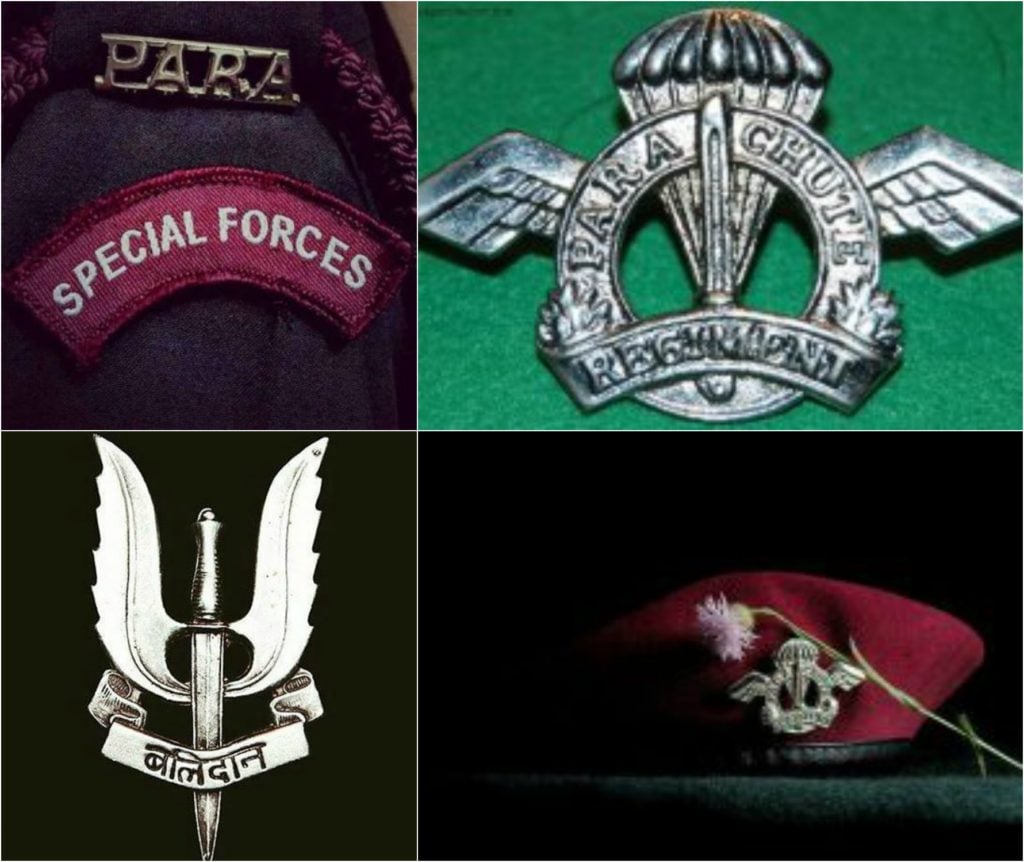
The training is world’s toughest and harshest like surviving in the wilderness by eating plants, bugs and making tools, keeping warm, etc. dealing with torture and capture, specialized methods of infiltrations, capturing friendly signals etc. HAHO and HALO techniques are an important part of their training of the Para Commandos. They are called as the GLASS EATERS. Glass eating tradition is a ritual that fosters their sense of absolute fearlessness and superiority.
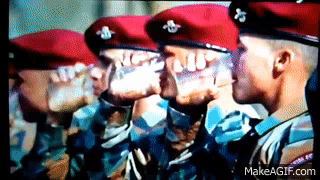
They are so efficient that they can fire while lying down, rolling, running, looking into the mirror. Snaking their way through an actual mined path. One of the interesting techniques of training is keeping a coin near their partner’s feet and keep running towards them and firing. You just can imagine the amount of confidence they possess in each other!!
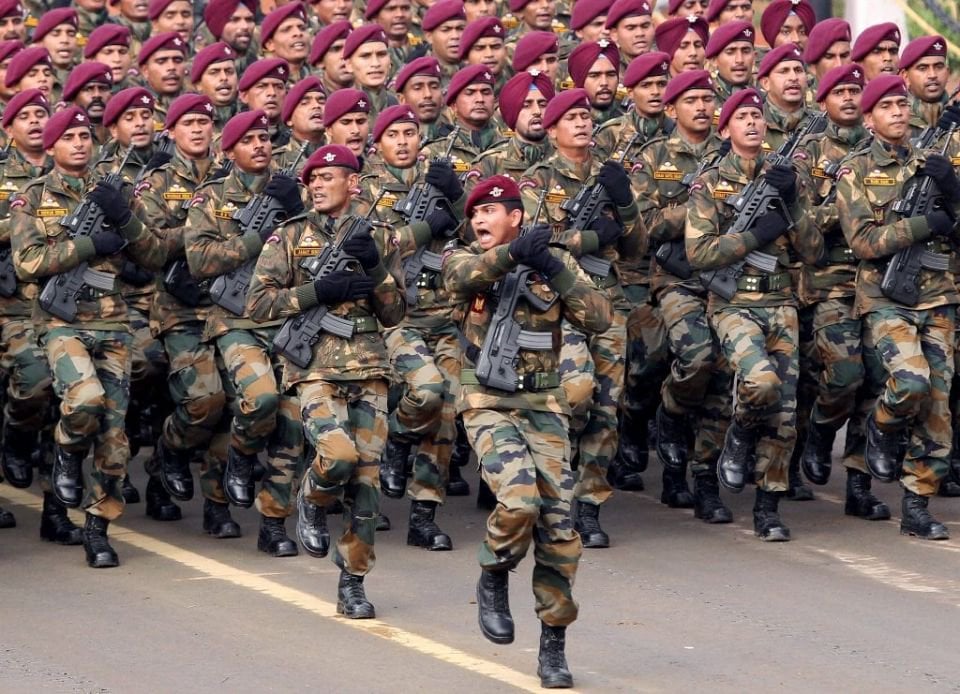
INDIAN ARMY’S SPECIAL FORCES
- Motto: Balidan (Sacrifice)
- Wanted: A guy whose mind can function when his tongue is hanging out. It should function enough to drag him out of a hole. What is between the ears matters more than how broad your shoulders are.
- Age range: 21-22 Years
- Selection: The Special Forces are a voluntary service (mostly from the Parachute Regiment), depending on selection through an initial probation period of three months during which only about 30% are selected.
- Training: After probation, training lasts three years.
- Dropout probability: 70%
- Fitness: The Special Forces in full gear need to finish in 21 minutes the 5km run for battle physical efficiency test. Other units can take three more minutes.
Running is not the sole criterion. An officer graded satisfactory (on a scale of excellent, good, satisfactory and poor) in the run but rated excellent in mountain walk may still make the cut. - Armed combat: Should be able to fire from either shoulder. Trained to use semi-automatic pistols, sub-machine guns, assault rifles, sniper rifles, light machine guns, grenade launchers and rocket launchers. Choice of weapons is mission-dependent.
- Unarmed combat: Martial arts such as judo, karate, kung fu.
- Mode of transport: Mostly legs. Sometimes parachutes, after jumping from aircraft. Sometimes hands, to swim.
- Can they marry? Yes
- Have I seen them? Yes, if you have watched the Republic Day Parade. The only contingent to hop-jog through Rajpath during the parade is the Special Forces.

